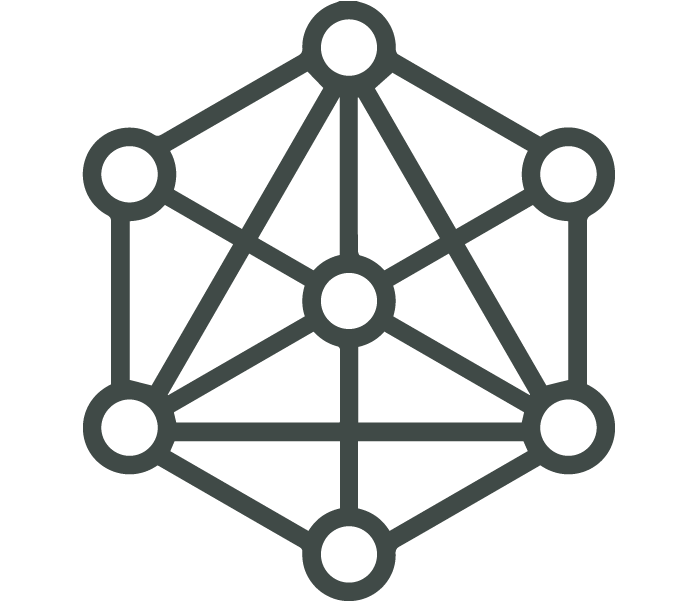Theme Indicators
The results of the Organisational Resilience Check will give a good baseline of the institutional capacity of your organisation. The results of the assessment can be used to inform organisational planning. If the assessment is repeated every year then you’ll be able to see trends in capacity development.
However, when planning for capacity development, it is wise to include several different measures of success. Your organisation may require a more quantitative measure of a particular capacity area. Some suggested quantitative indicators that can be used to measure the development of 12 key capacity areas over time are presented below. These areas broadly correspond to those found in the Organisational Resilience Check.
Every organisation differs in its monitoring needs, and this list of indicators can be adapted for your own capacity development and planning needs. It is good practice to use multiple methods of monitoring, and these indicators should be used alongside other resources such as the Capacity for Conservation Organisational Assessment and Development Plan to get a well-rounded view of the effectiveness of capacity building.
List of indicators:
Constituency
Your organisation informs and engages people through its work
The number of members/supporters that your organisation has is a good indicator of the ability of your organisation to inform and engage.
- Number of members/supporters
- Number of members/supporters actively involved in the work of your organisation
Crisis Preparation and Response
Your organisation has clear systems in place to both prepare for and respond to crises.
Risk management plans are being actively implemented and regularly reviewed. The organisation has a continuity plan for how to determine and maintain core operations during crises, including establishing financial reserves. Staff feel supported and empowered and collaborate well.
- A risk assessment and mitigation process is in place and actively applied.
- The risk assessment and mitigation process is annually updated
- Number of months basic operational costs the organisations financial reserves can cover
- In the last crisis the organisation faced, clear, consistent information was proactively shared with staff and other stakeholders.
- In the last crisis the organisation faced, staff felt they had a clear understanding of how to make decisions and take action
- Percentage of staff who feel cared for by the organisation, including their general wellbeing and mental health
External Communications
Your organisation is able to produce engaging and informative communication materials to raise awareness and funding for your work.
Numbers of distributed magazines/articles and social media hits are good measures of your ability to produce effective materials.
- Number of newsletters printed/distributed
- Number of website/social media update views/comments
- Number of active campaigns
Finance Management
Your organisation has the appropriate systems in place to ensure effective management of funds.
Organisations should be able to cover all core costs and fund projects/activities that help achieve the organisation’s mission. Some money should be put into financial reserves to provide stability in difficult times.
- Percentage of expenditure on core operational costs
- Percentage of expenditure on projects and activities
- Percentage increase in financial reserves
Fundraising
Your organisation is able to effectively raise funds for its work and cover core costs.
Sustainable organisations rely on a range of funding sources and cover core costs with unrestricted funds.
- Percentage income coming from restricted sources
- Percentage income coming from unrestricted sources
- Percentage income coming from largest funder
- Percentage of submitted project proposals that are successful
Governance
The Board/Council/Trustees effectively govern the organisation.
Many organisations aim to hold four board meetings every year, with a high level of attendance. Too many meetings suggests that the board is inefficient or ineffective, while fewer meetings may mean that the board is unable to provide guidance and insight when required. Governance should be participatory, with all relevant stakeholders represented and able to hold the organisation to account.
- Number of board meetings held per year
- Percentage attendance at board meetings
- Number of emergency board meetings held
- Percentage of relevant stakeholders represented on the board
Human Resources & Volunteer Management
Your organisation is well placed to employ highly skilled staff and committed volunteers.
An increasing number of permanent staff indicates growth of an organisation, while a low rate of staff turnover suggests that employees are happy with work and working conditions within the organisation.
- Number of full time equivalent paid staff that work for the organisation
- Number of staff that left the organisation in the last year
- Number of volunteers that work for the organisation
Internal Communications
Your organisation has clear and efficient systems in place to communicate between staff.
Staff meetings are essential to successfully communicate within an organisation. Senior management should meet regularly to provide effective oversight to an organisation.
- Number of meetings per year that involve all or most staff
- Number of senior management meetings per year
Leadership
The leadership of your organisation is appraised regularly and held to account if necessary. Future leaders are identified and encouraged.
It is important to regularly review the effectiveness of current leadership and to develop leadership at all levels within the organisation.
- Number of times the Executive Director/Chief Executive Officer has been appraised by the board in the last 5 years
- Number of employees receiving training in leadership skills in the last 5 years
Monitoring, Evaluation & Learning
Your organisation has appropriate systems in place to assess progress with projects, programmes and organisational development.
Workplans are not set in stone and should be reviewed regularly. This gives an organisation an opportunity to adapt to new circumstances and lessons learnt.
- Percentage of project workplans reviewed every 12 months
- Percentage of staff workplans reviewed every 12 months
Organisational Planning & Management
Your organisation takes a strategic approach to planning and you regularly review your organisation’s strategy, organisational documents, and structure.
Your organisation will be more sustainable if you plan for the future. Regular reviews of your overarching strategy and organisation’s structure will allow you to adapt to changes in the external landscape.
- Number of years since last strategic plan review
- Number of years since organogram review
Partnerships & Networks
Your organisation is able to form robust relationships that benefit both your work and ability to advocate.
The number of governmental and non-governmental partnerships that your organisation has formed or participates in is a good indicator of an ability for an organisation to network.
- Number of governmental or parastatal groups on which the organisation is officially represented
- Number of NGO partnerships in which the organisation is formally involved
- Number of bilateral agreements with other organisations
Project Planning & Management
Your organisation plans and implements successful conservation projects, meeting realistic targets and producing measurable outcomes.
Projects should be developed in a participatory manner. All annual project targets and reporting requirements of the organisation should be met on time.
- Percentage of projects developed with participation of project stakeholders
- Percentage of annual project targets met
- Percentage of reporting requirements met on time












